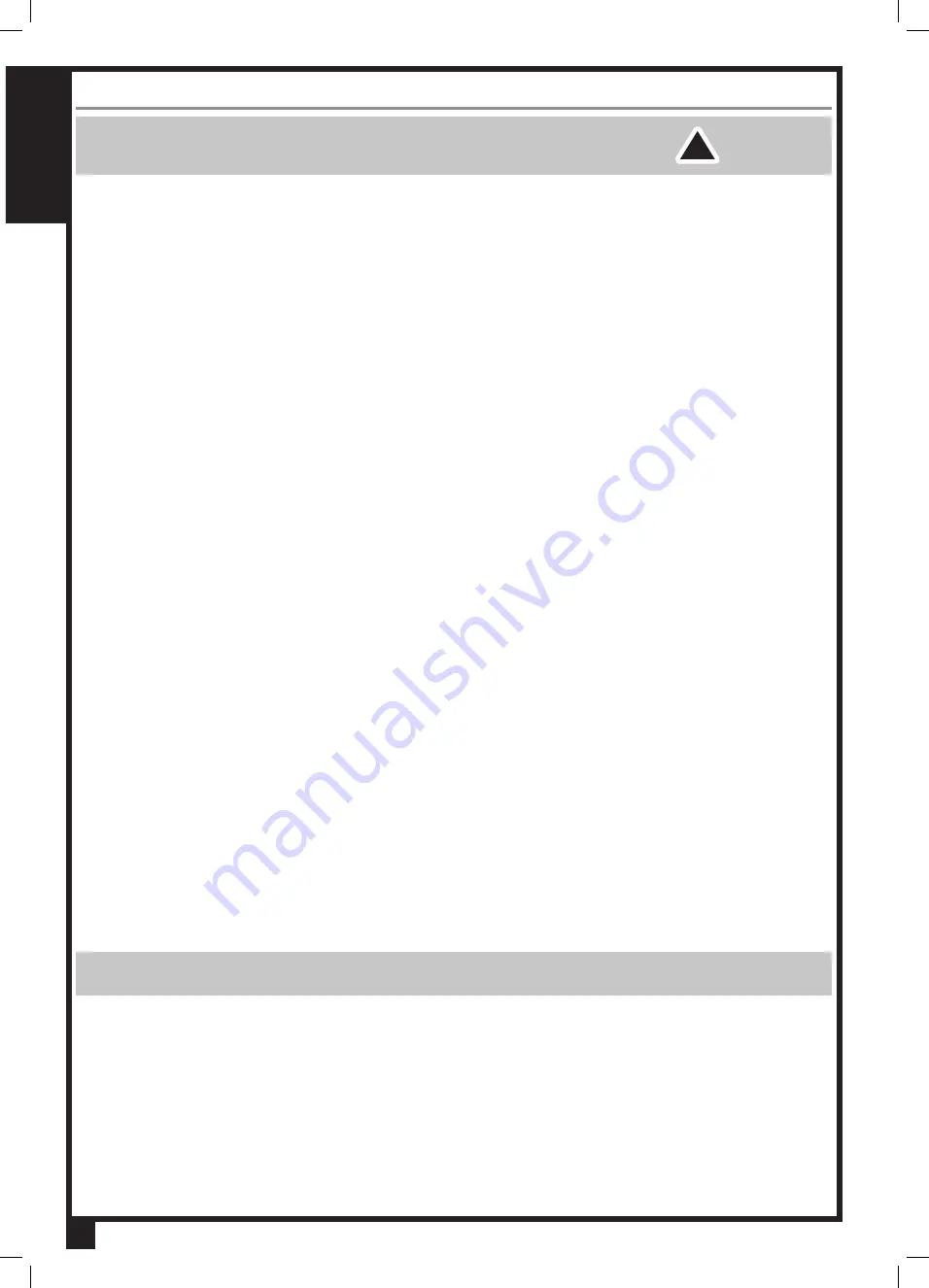
ENGLISH
10
SAW BLADE
WARNING!
To reduce the risk of injury, never connect plug to power
source outlet until all assembly steps are complete and until you have
read and understood the entire owner’s manual.
BLADE TENSION ADJUSTMENT
A change in blade width or type of material being cut will affect the blade
tension.
●
If
the blade tension is too loose, it will be difficult to cut a straight line.
●
If the blade is too tight, the blade may break or come off the wheel.
1.
Turn the blade tension knob (L. fig 1 & 2) clockwise, to raise the upper
blade wheel and increase the tension on the blade. The blade should be
tight on the wheel, but do not overtighten the blade.
2. Turn the blade tension knob counter-clockwise to lower the upper blade
wheel and reduce the tension on the blade.
BLADE TRACKING ADJUSTMENT
Check for proper blade tension first before making any blade tracking
adjustments.
1. Rotate the upper blade wheel clockwise and check the position of the
blade on the wheel. The blade should remain in the center of the wheel.
2. If the blade moves toward the front of the wheel, loosen the blade
tracking lock knob (BB, fig 2)) and turn the blade tracking knob (AA, fig
2) slightly clockwise.
3. At the same time, turn the upper wheel until the blade is centered.
4. If the blade moves toward the back edge of the wheel, turn the blade
tracking knob slightly counterclockwise.
5. At the same time, turn the upper wheel until the blade is centered.
6.
Tighten the blade tracking lock knob when you are finished making
adjustments.
7. Check the position of the blade on the lower wheel. If the tracking is off,
continue adjusting the blade until it sits properly on both wheels.
BLADE REPLACEMENT
●
It is possible to replace the blade with the table in place, however, it
may be easier to remove the table before replacing the blade.
●
If you do not remove the table, remove the plastic table inset and pull
the table extension out so that it does not block the slot in the table
before removing or installing the blade.
1. Loosen the fence clamp and remove the fence from the table.
2. Pull on the upper and lower door latches to open the wheel cover door.
3. Turn the blade tension knob counter-clockwise to lower the upper blade
wheel and reduce the tension on the blade.
4. Remove the old blade. Slide the blade out of and away from the upper
and lower blade guides.
5. Slide it through the slot in the table if you did not remove it.
6. Put the new blade in position around the upper and lower wheels and
between the upper and lower blade guides.
NOTE:
The teeth of the blade should be pointing downward and facing
the front of the tool.
7. Center the blade on the upper and lower wheels. Turn the upper wheel
slowly to check the position of the blade.
8.
Turn the blade tension knob (L. fig 1 & 2) clockwise, to raise the upper
blade wheel and increase the tension on the blade.
9. Make sure the blade is still centered on the upper and lower wheels and
that it moves freely through the blade guides.
10. The blade must be fully adjusted properly before operating the saw.
!
Summary of Contents for BS5105
Page 15: ...ENGLISH 15 141211 SCHEMATIC DRAWING...
Page 32: ...FRAN AIS 32 SCH MA...











































